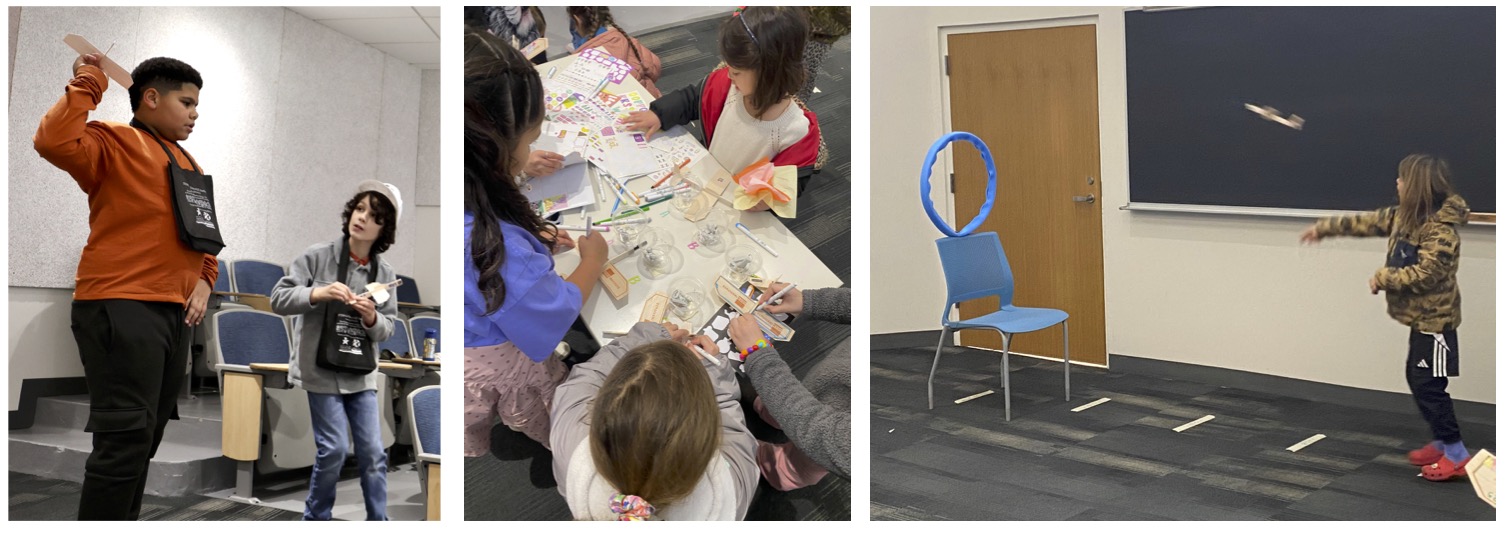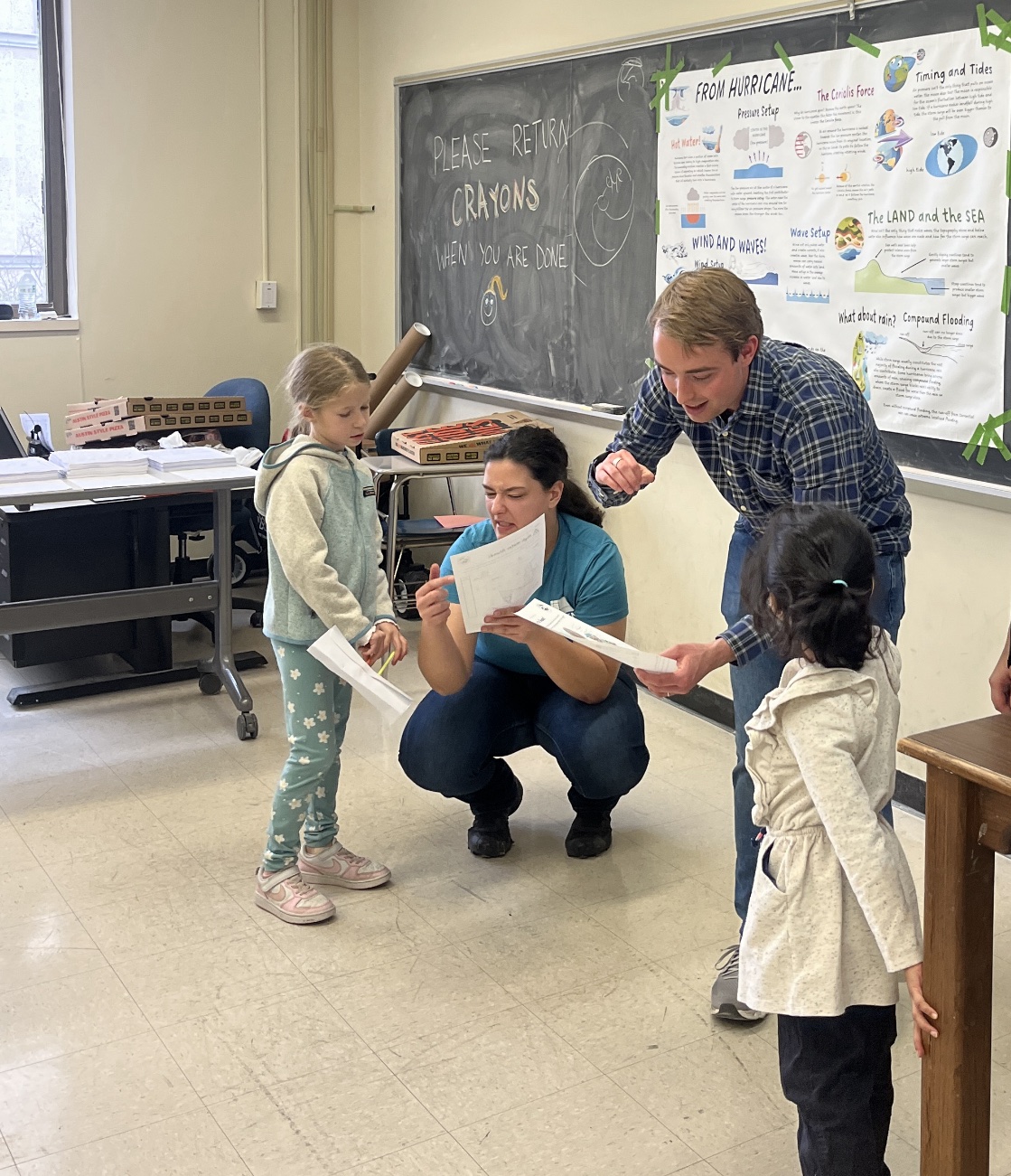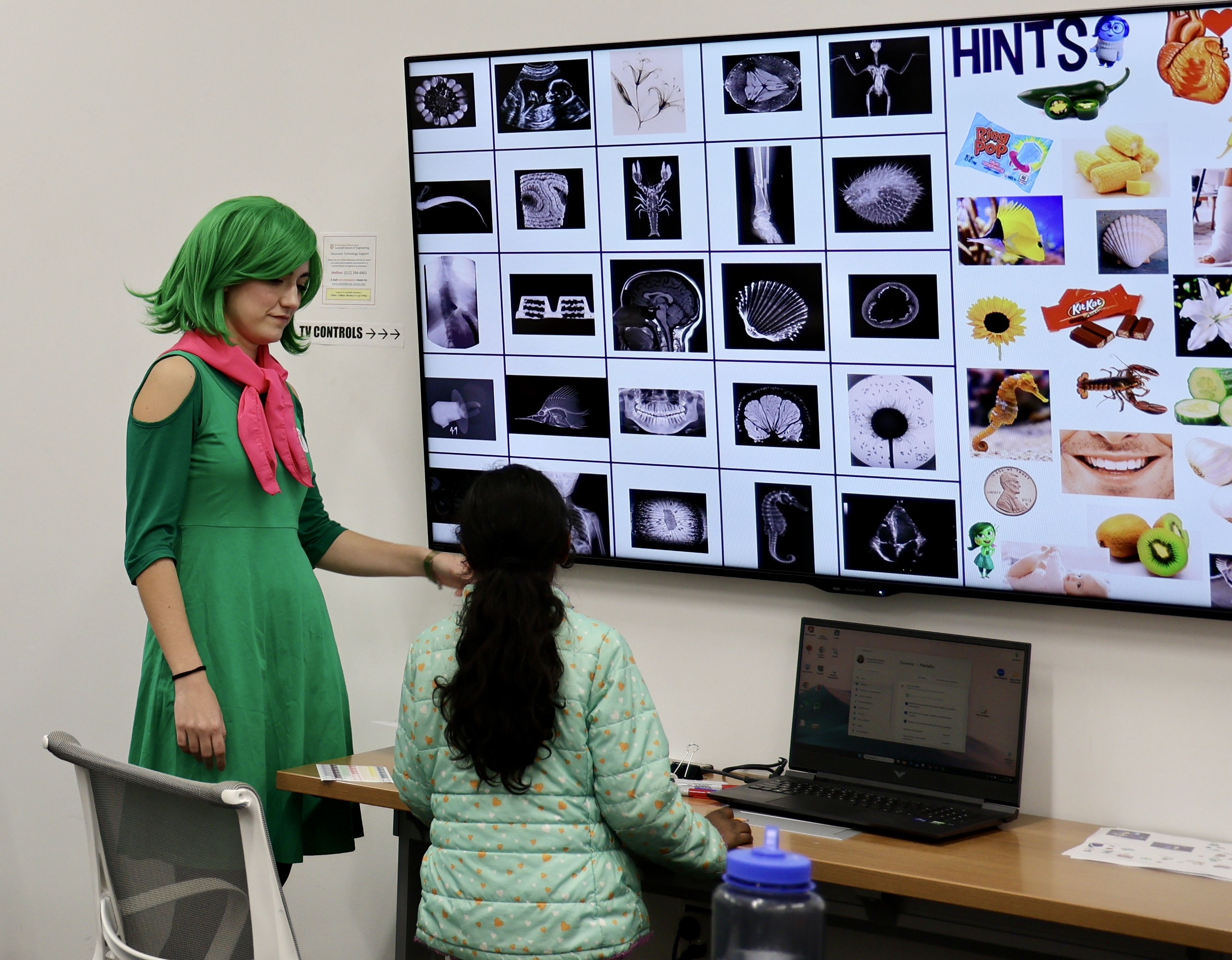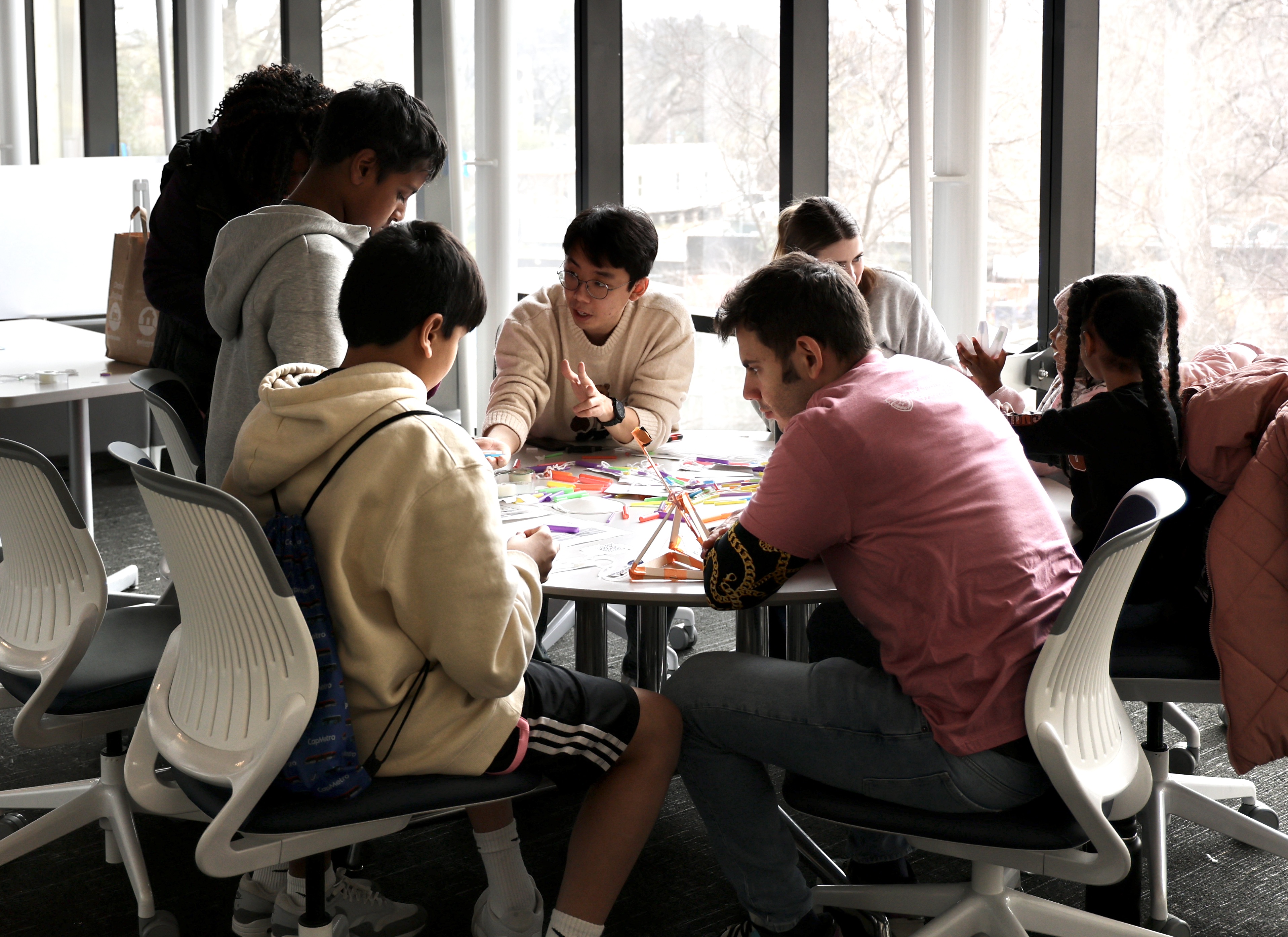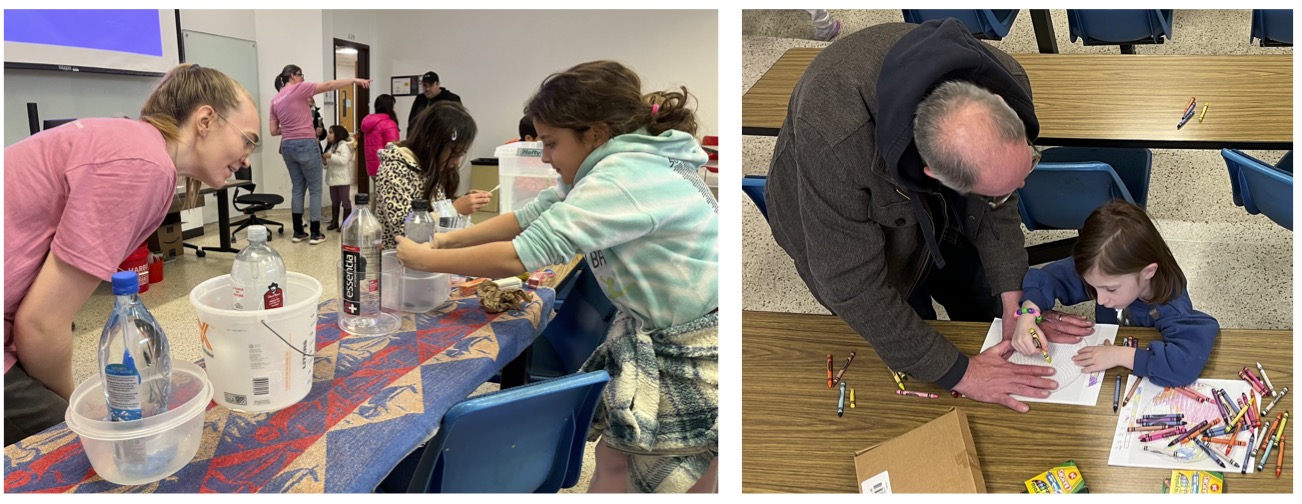Huddled into jackets and under umbrellas, over 10,000 elementary and middle school students flocked to The University of Texas at Austin’s campus on Saturday, Feb. 22, 2025, for Women in STEM’s 24th annual STEM Girl Day. The event is a playground of hands on activities, demonstrations, and exhibits that serve to inspire the next generation of Science, Technology, Engineering and Mathematics (STEM) learners, and was a perfect way to spend a chilly, rainy day.
Among the maze of bustling classrooms and interactive stations, the Oden Institute for Computational Engineering and Sciences curated five unique events, plus an open house in the Texas Advanced Computing Center's (TACC) Visualization Lab, all of which offered students a glimpse into the ever-expanding world of computational technology. Students began their adventures through the Oden Institute’s Girl Day experience with a passport guidebook in hand, collecting stamps as they journeyed across campus – flying planes, reading MRIs, and exploring the arctic along the way.
Passport Stamp 1: Paper Plane Path Prediction Party!
A large lecture hall in the basement of the Robert C. Welch Building echoed with gleeful shouts as paper airplanes glided across the room. Led by the Willcox Research Group, the plane path party began as students built their airplanes using pre-cut models. Customization followed, using markers and stickers galore.
Students learned that the location of the center of mass was the most important factor when attempting to optimize the flight of a glider, and were able to add and remove masses from different locations on their planes in an effort to optimize their flight. Simulation data lit up the projector screens behind the flightpath as students' creations whizzed through their targets, watching computational modelling in real time.
“The kids definitely had fun with this,” commented Oden Institute student Sebastian Henao-Garcia. “It was awesome to watch them decorate their planes and have such a hands-on learning experience that got them excited about science.” Henao-Garcia, a student in the Oden Institute's Computational Science, Engineering and Mathematics (CSEM) Ph.D. program, was one of more than 40 volunteers that particpated in Oden Institute activity stations.

